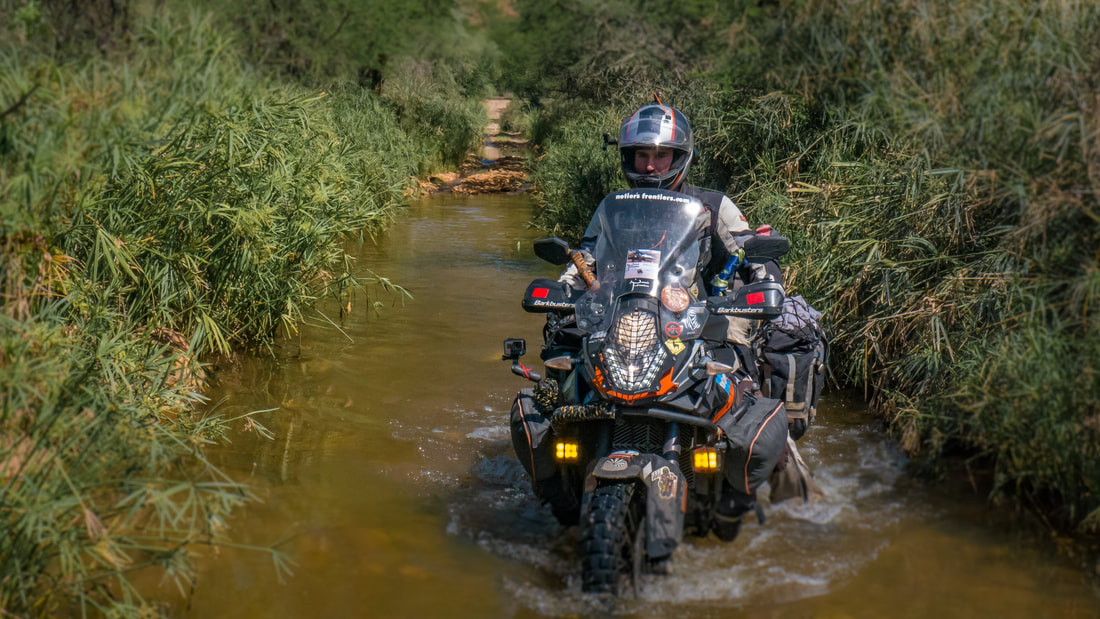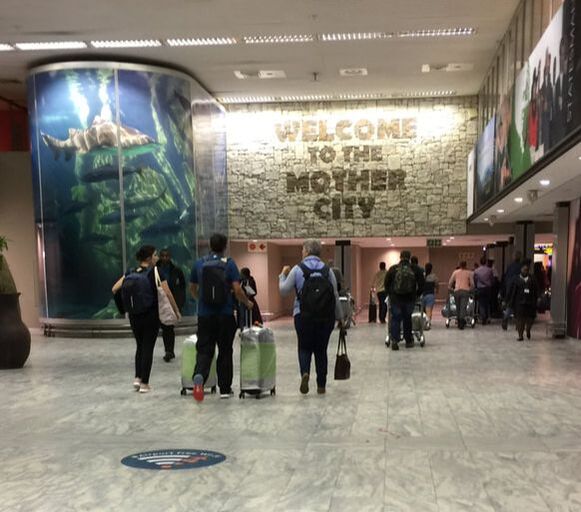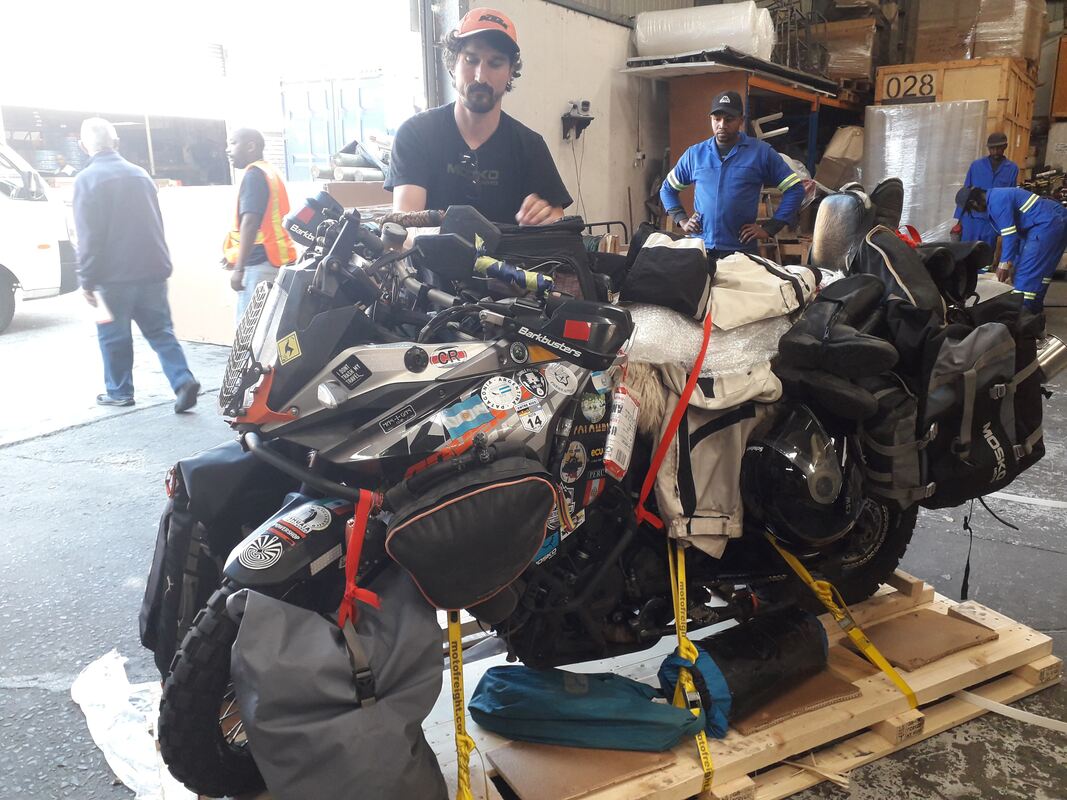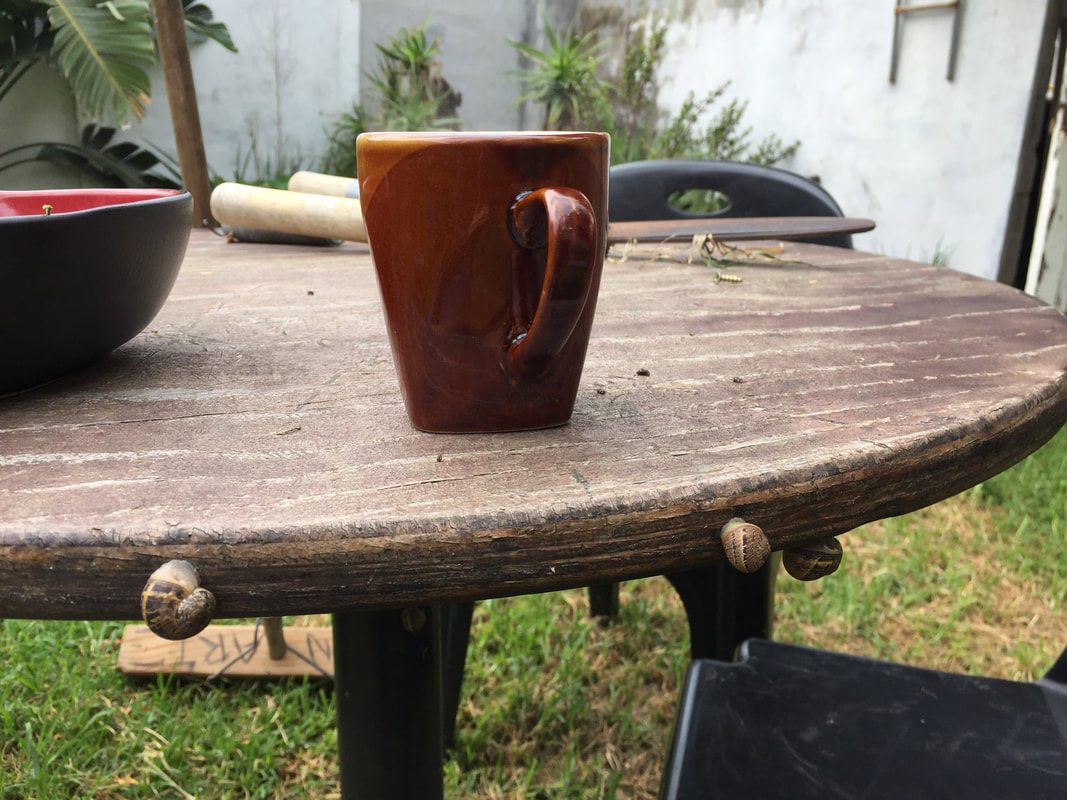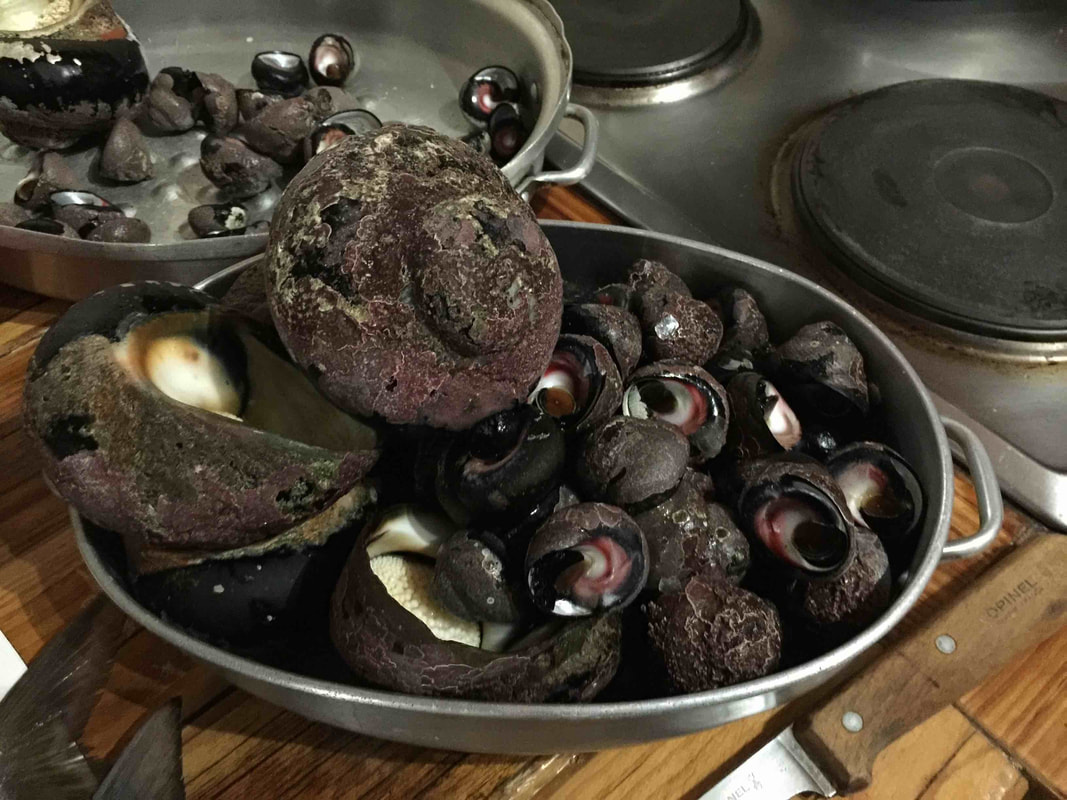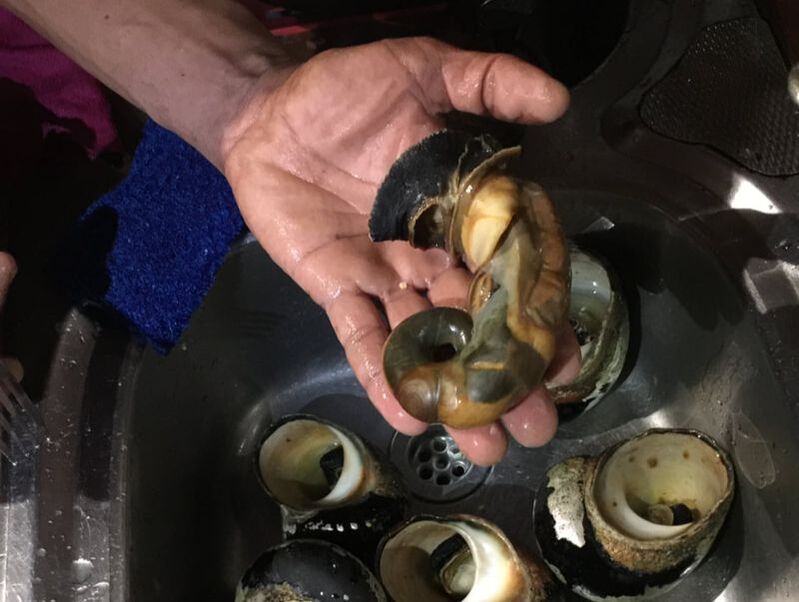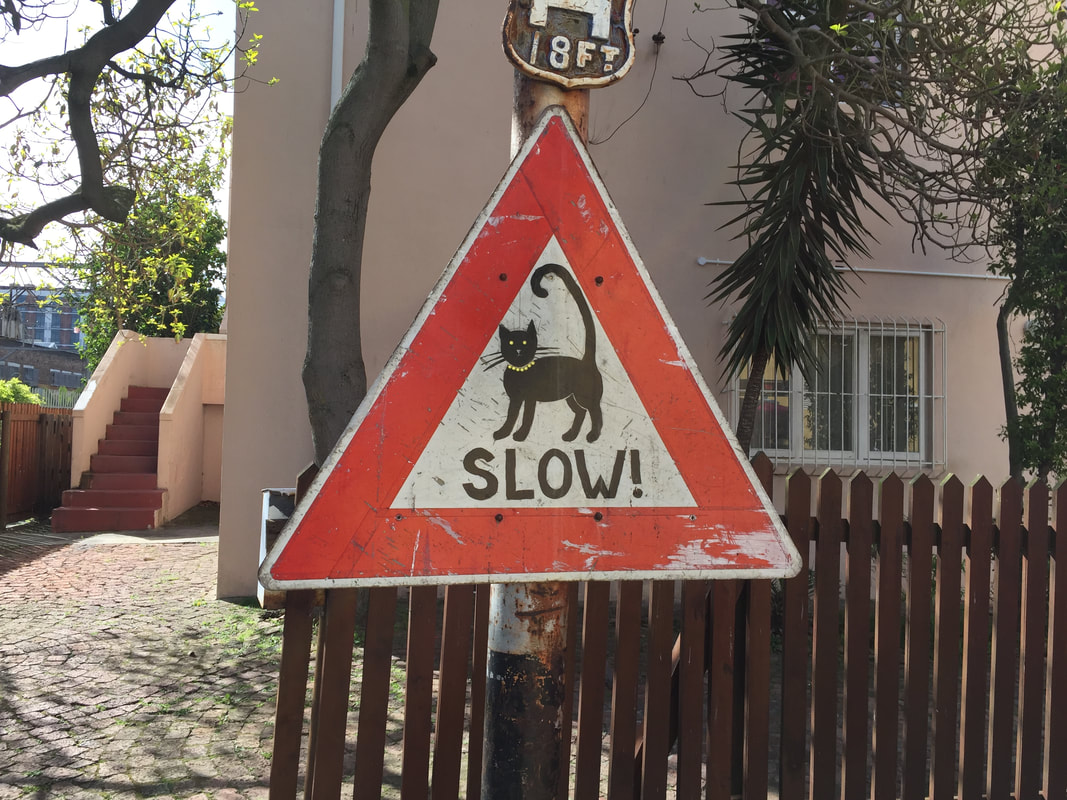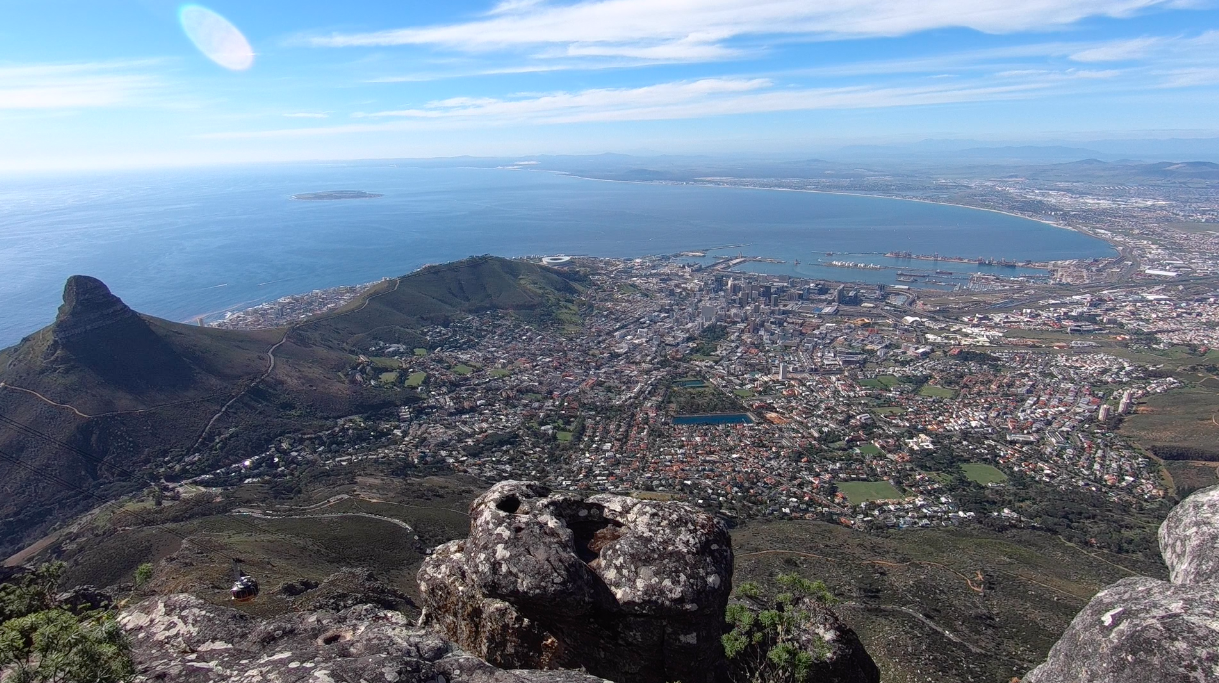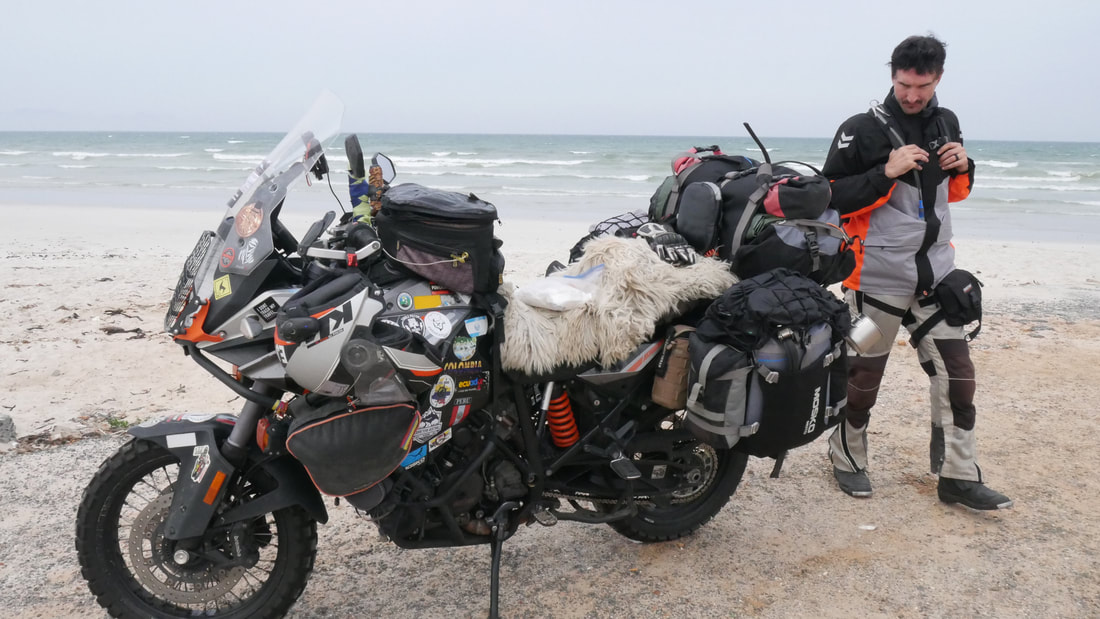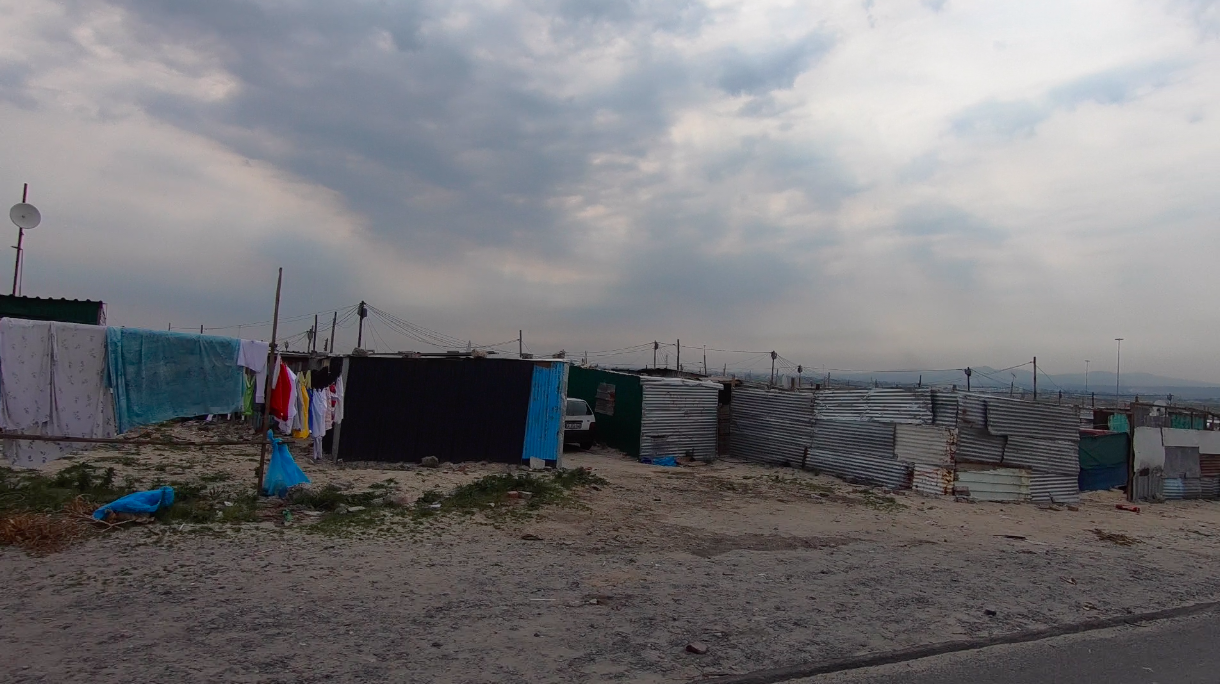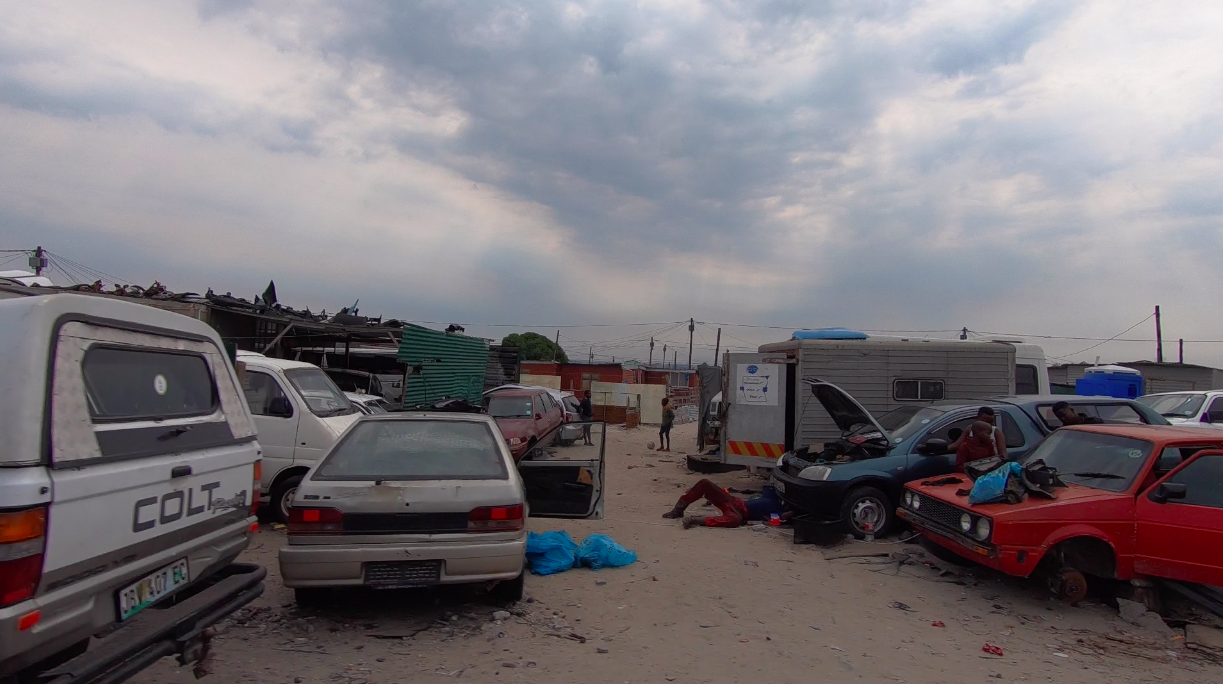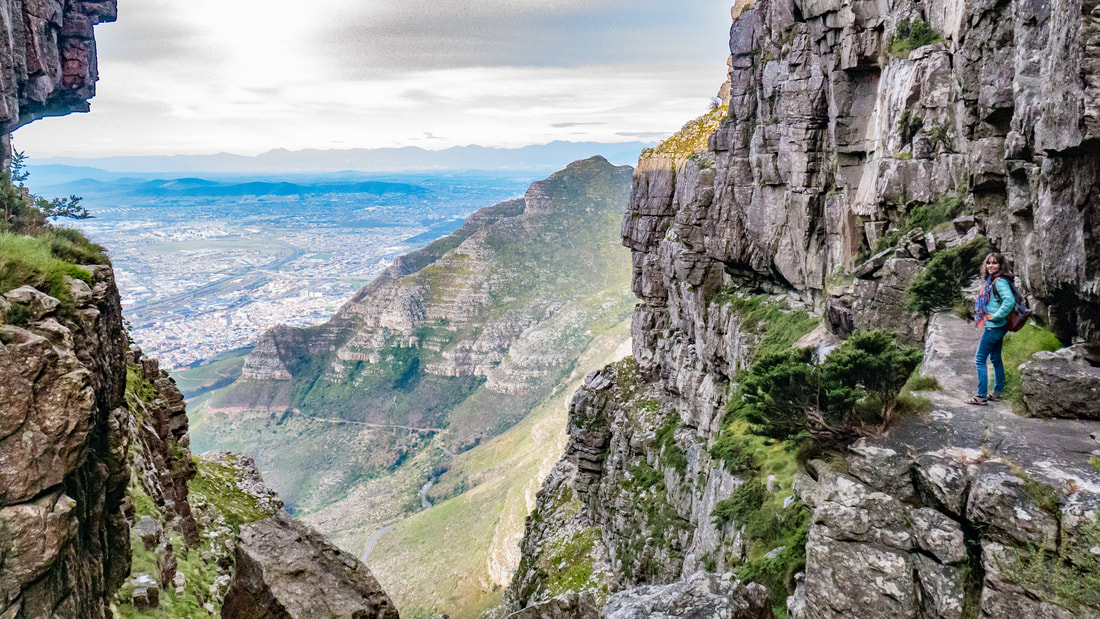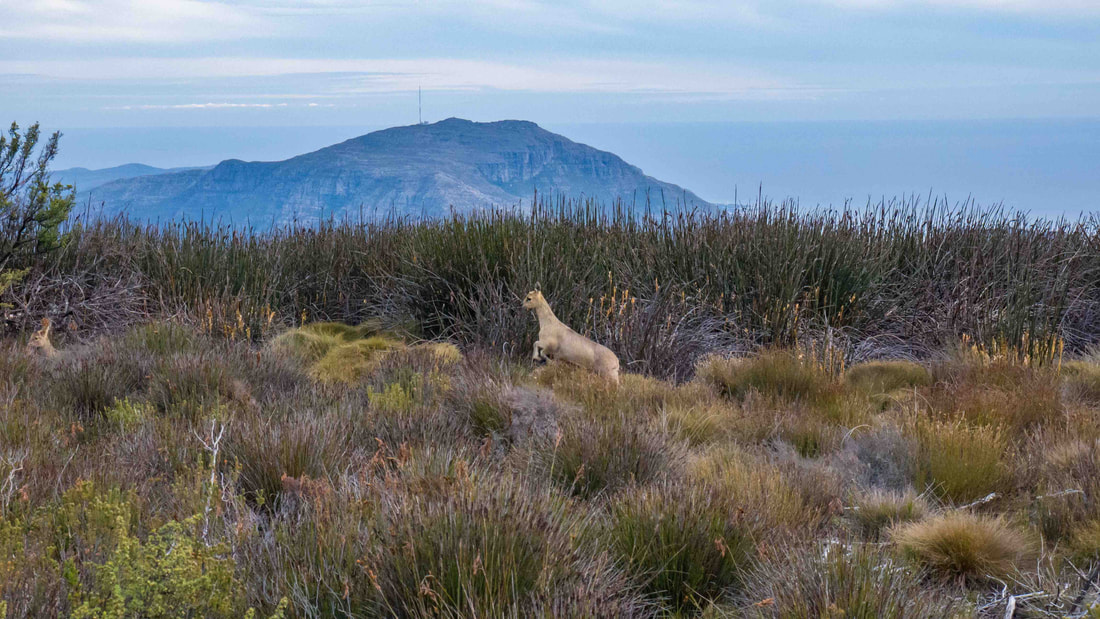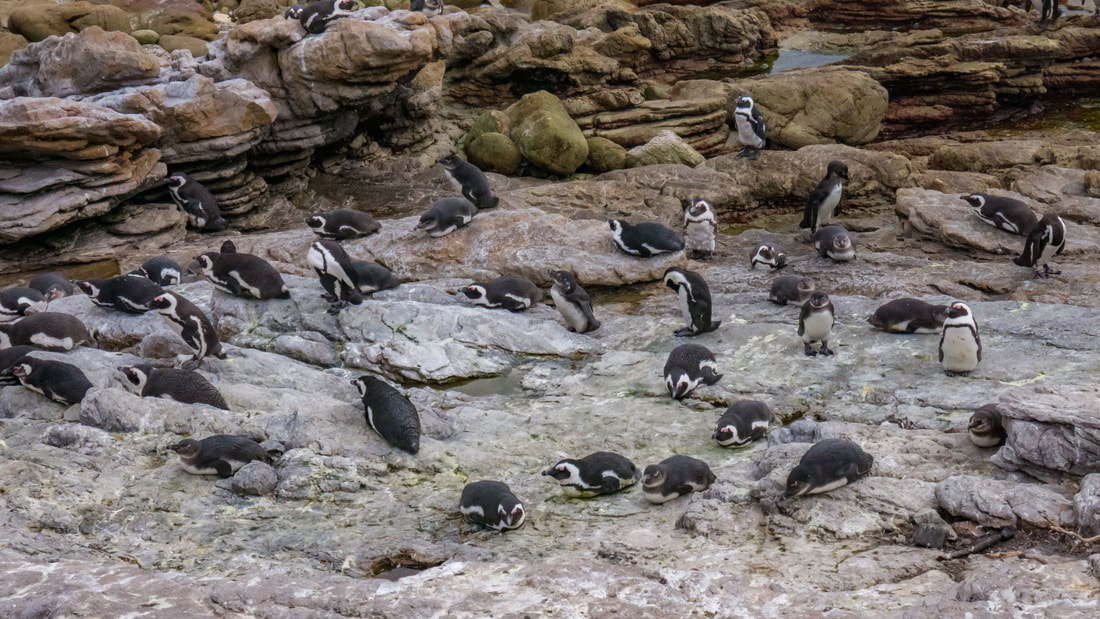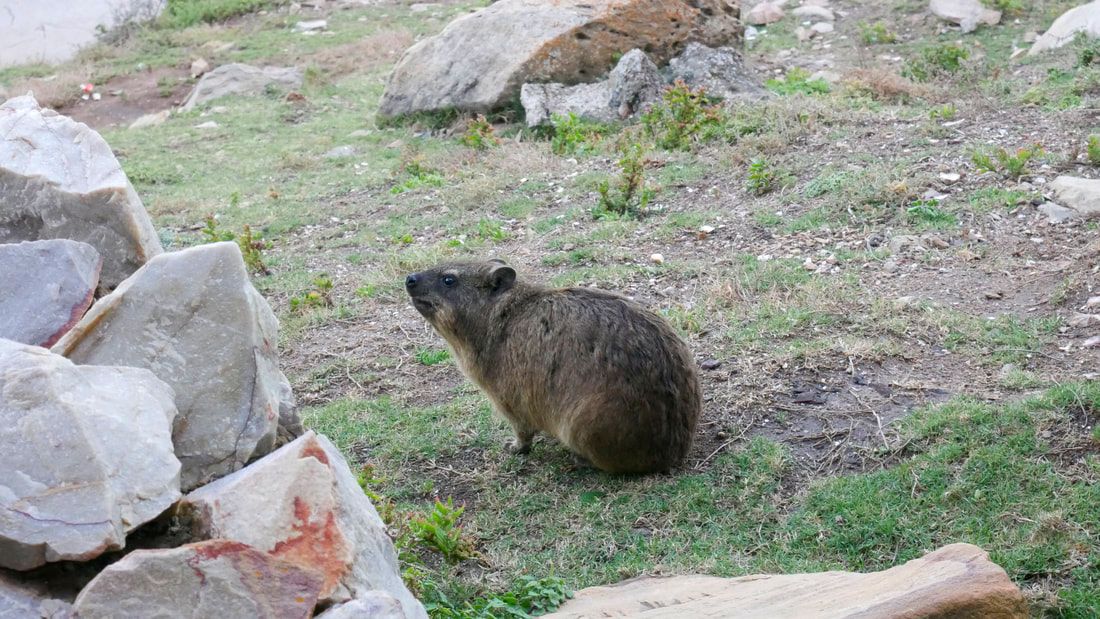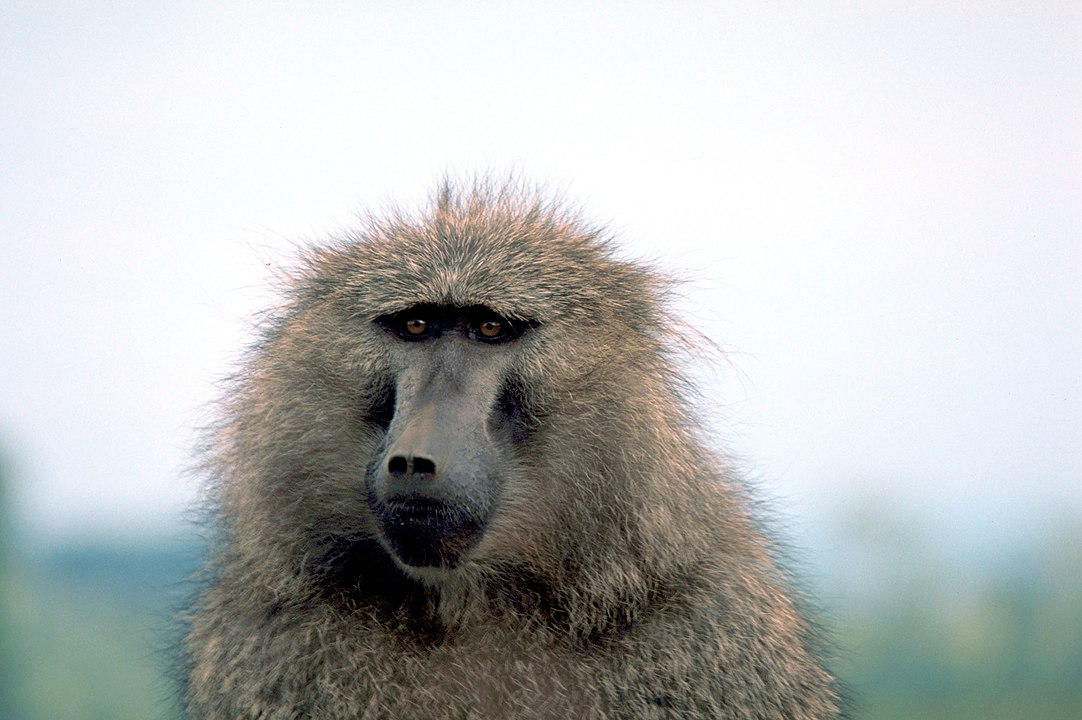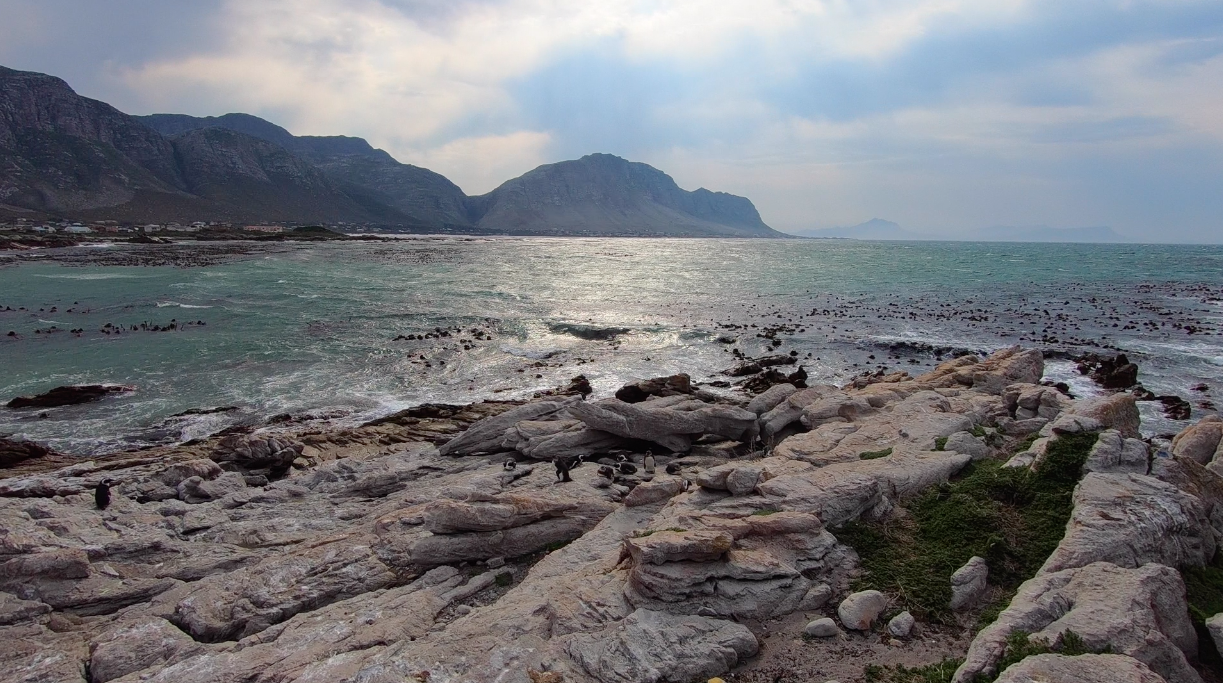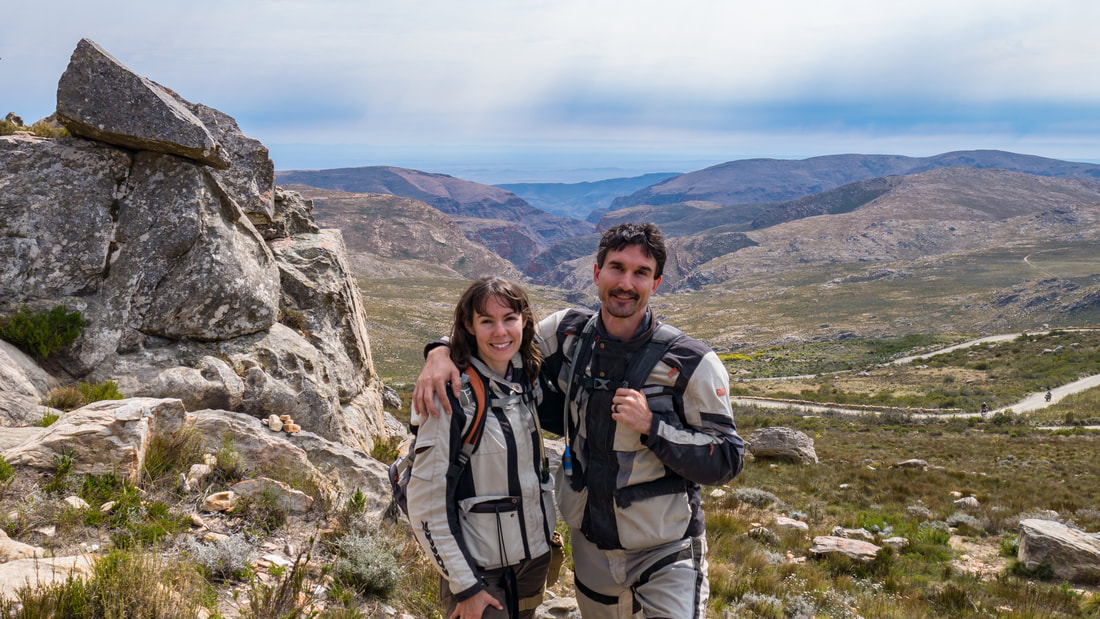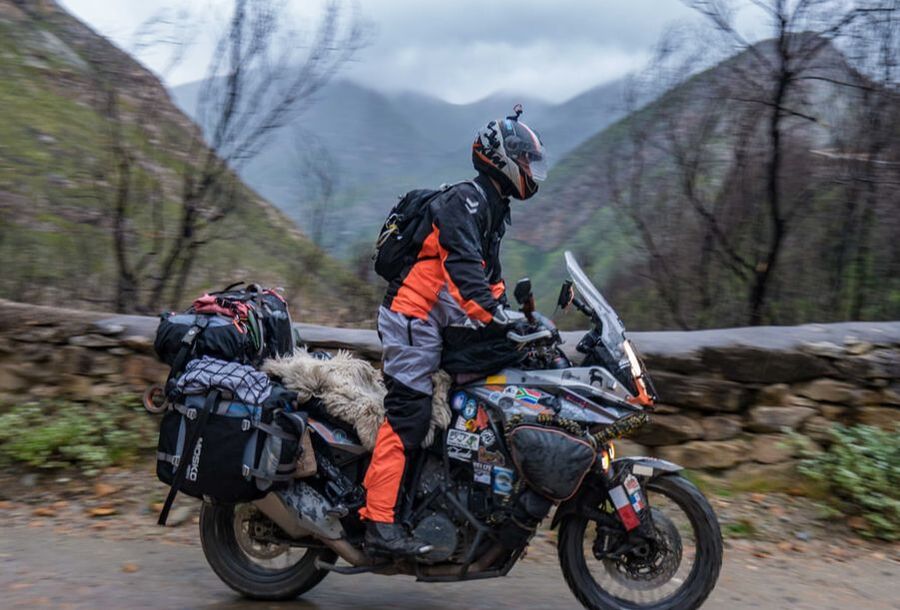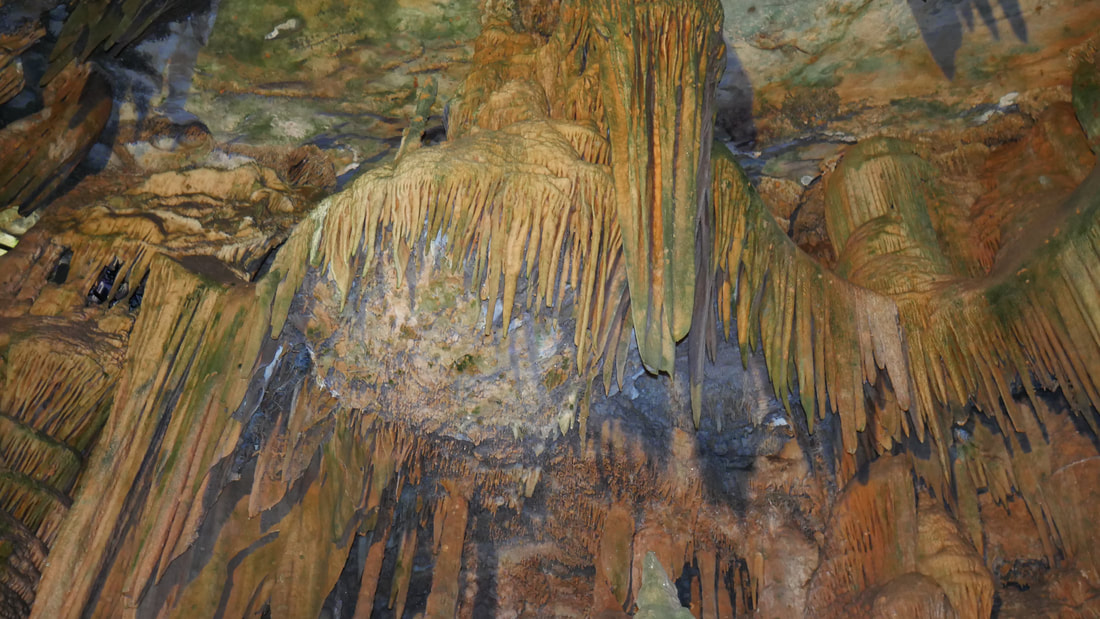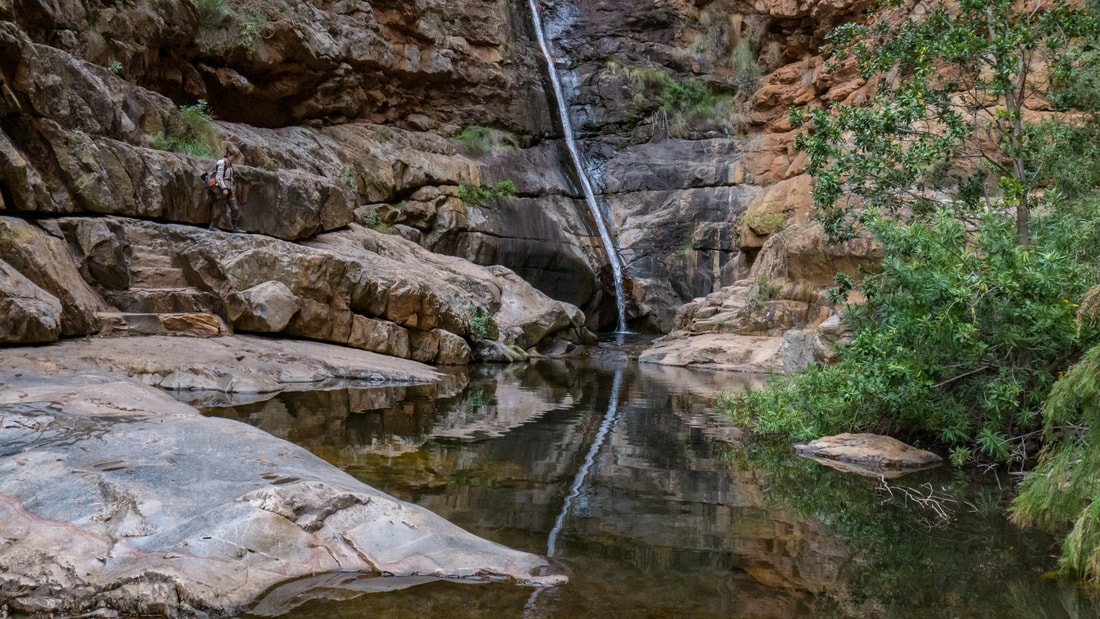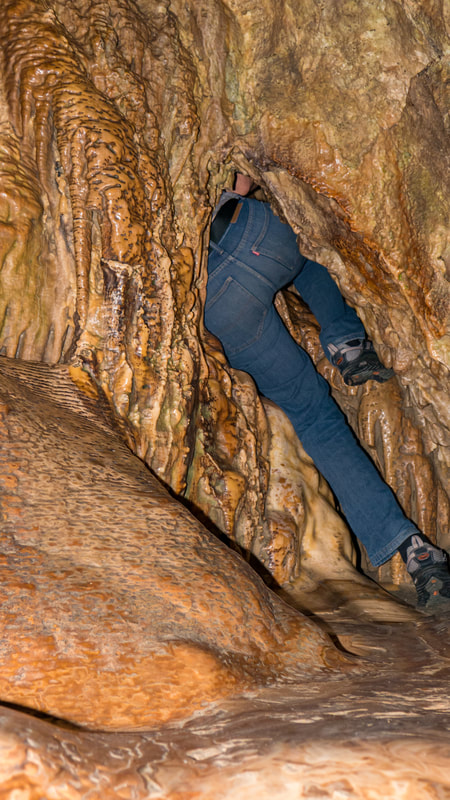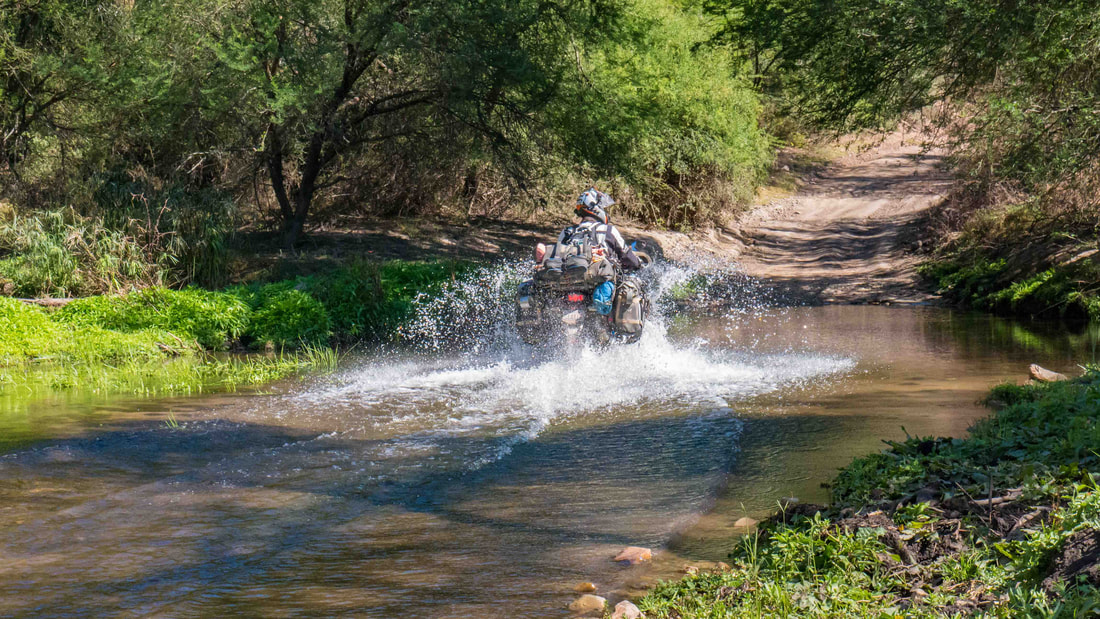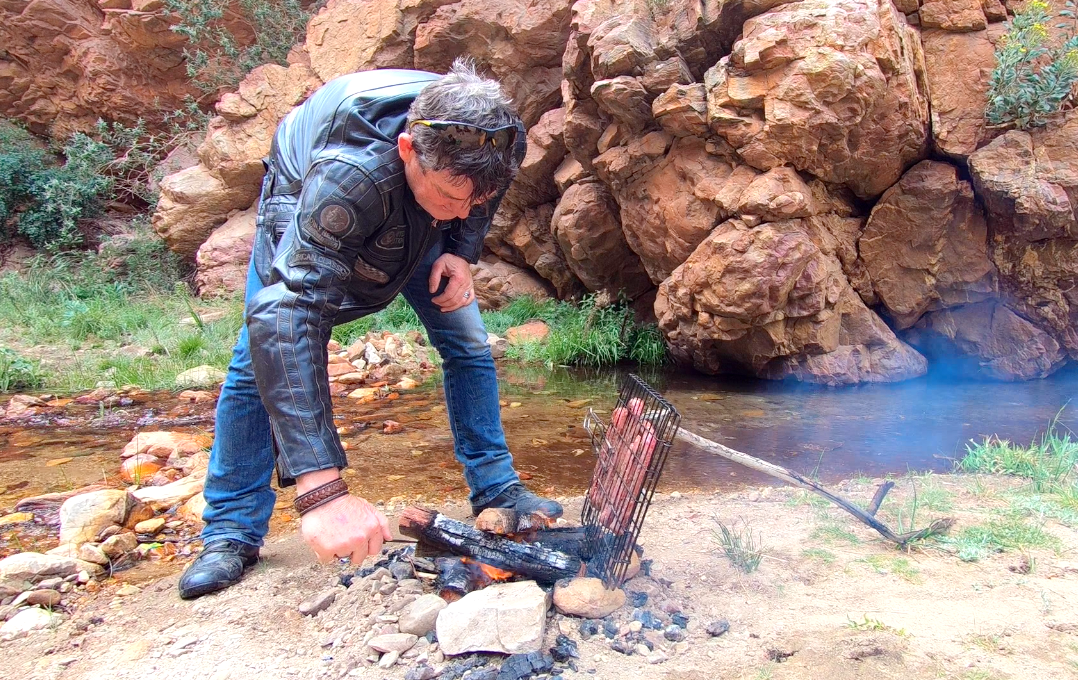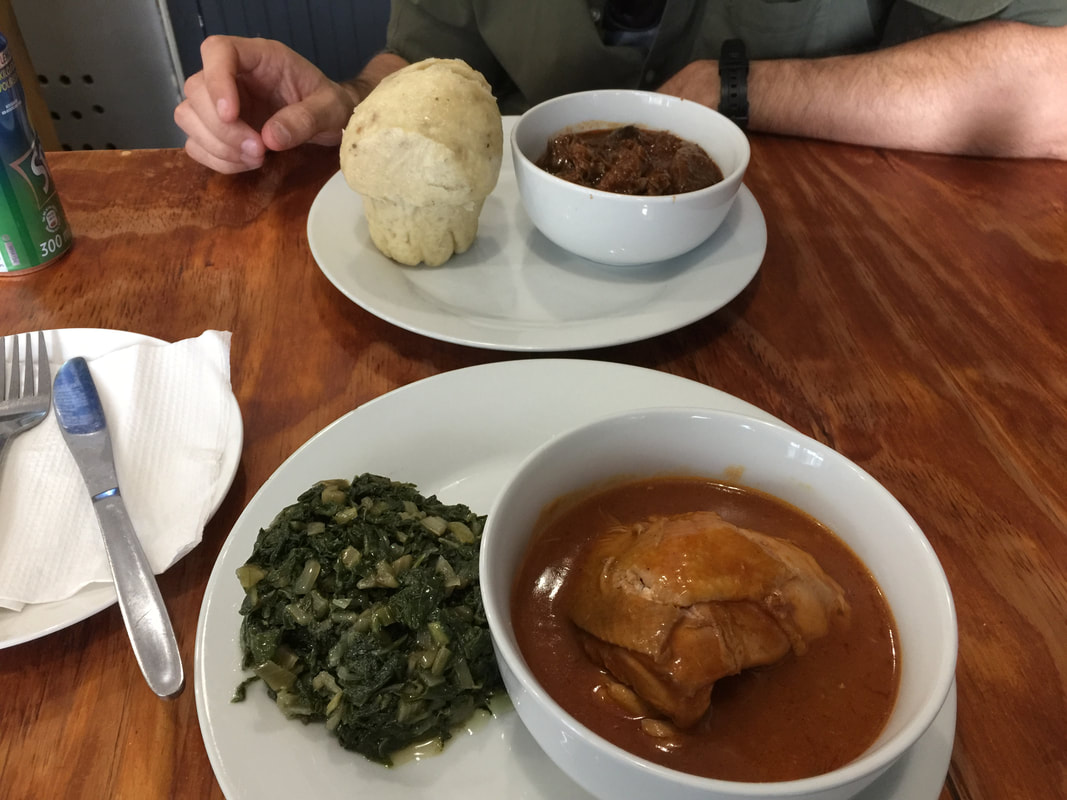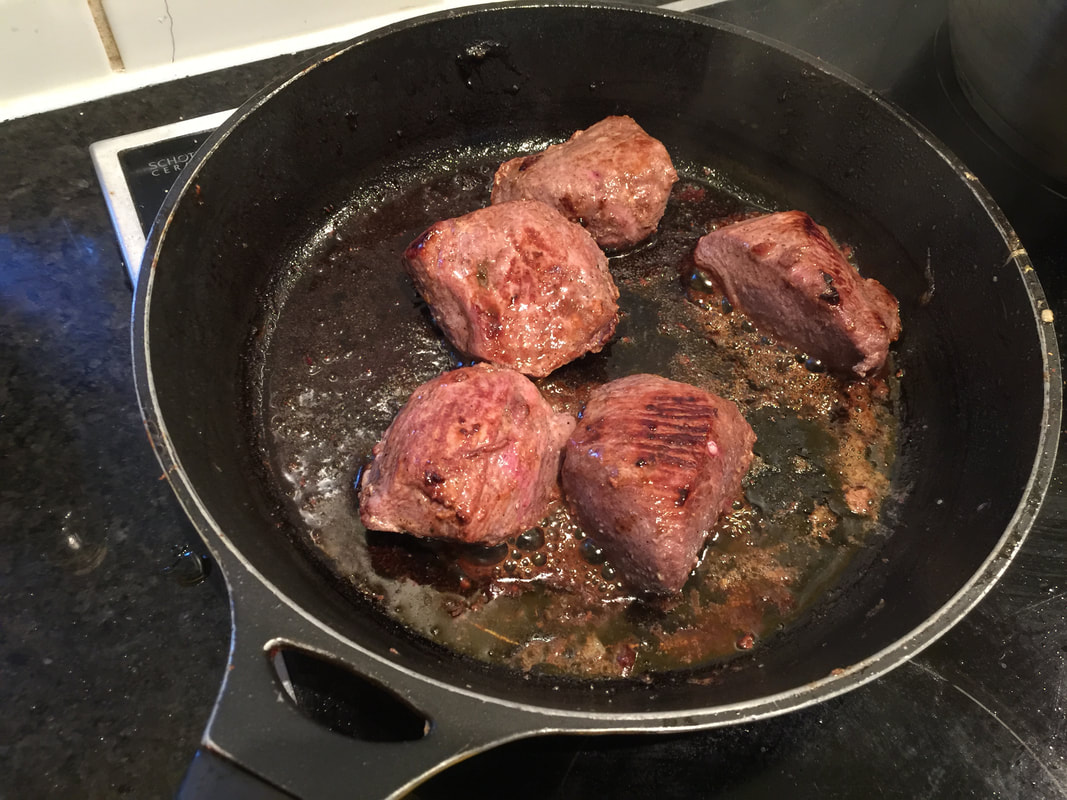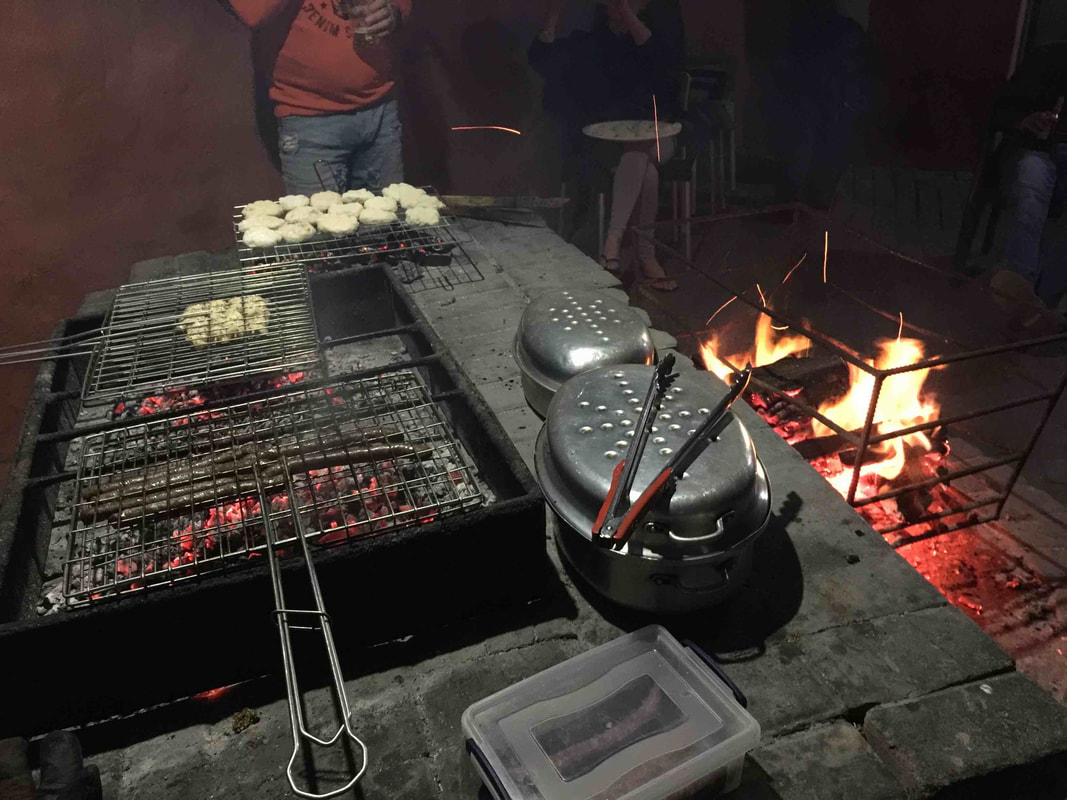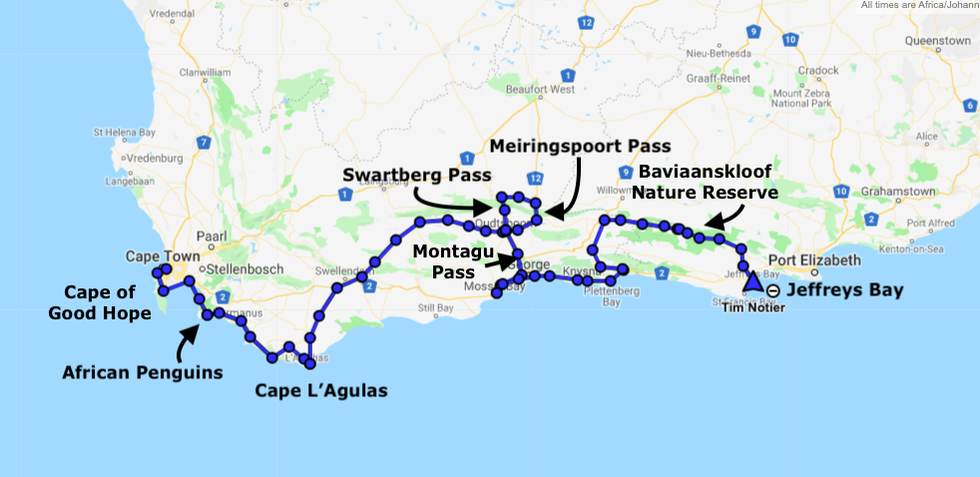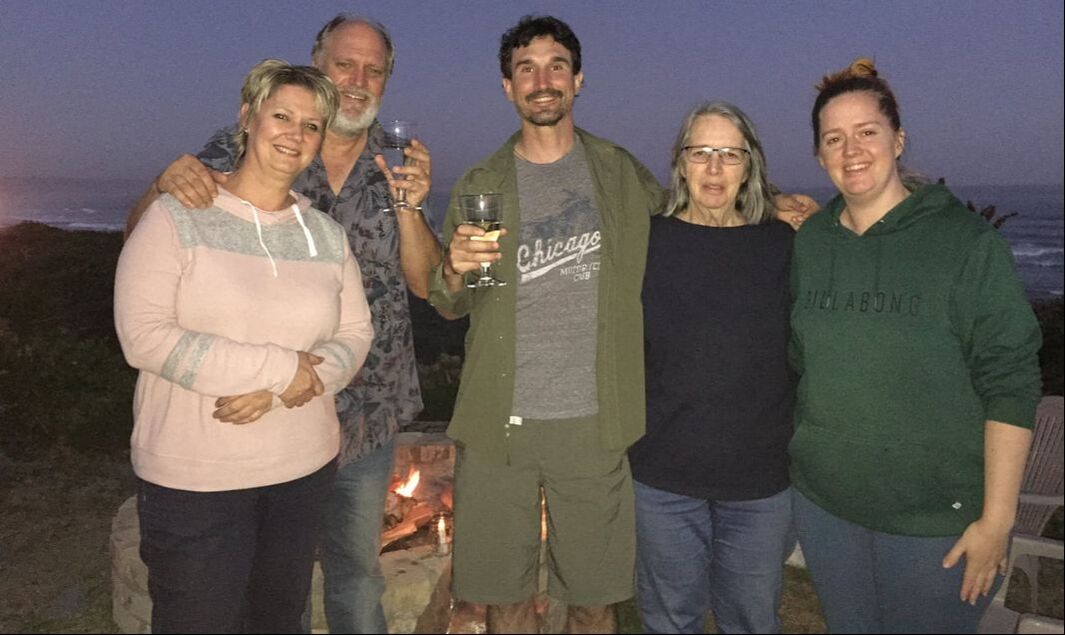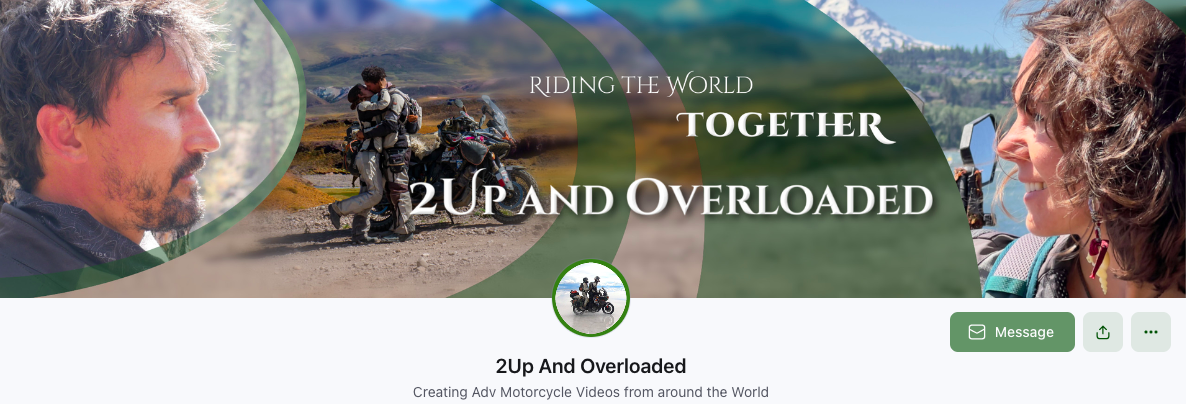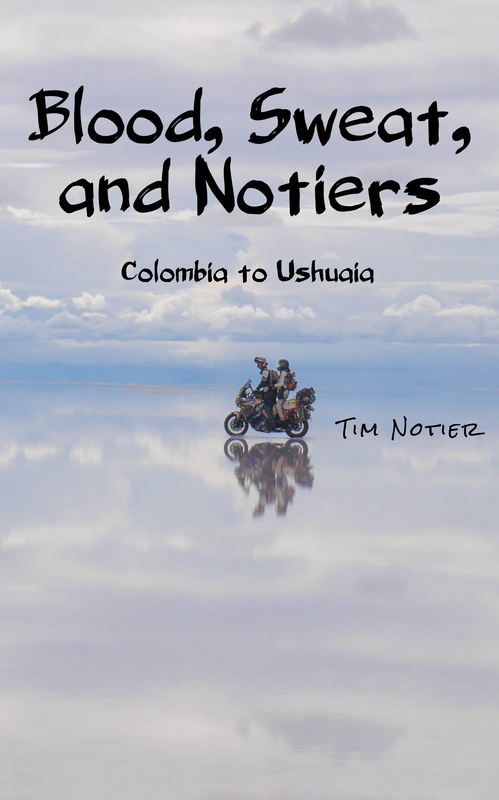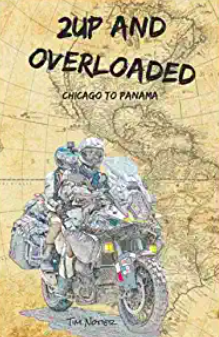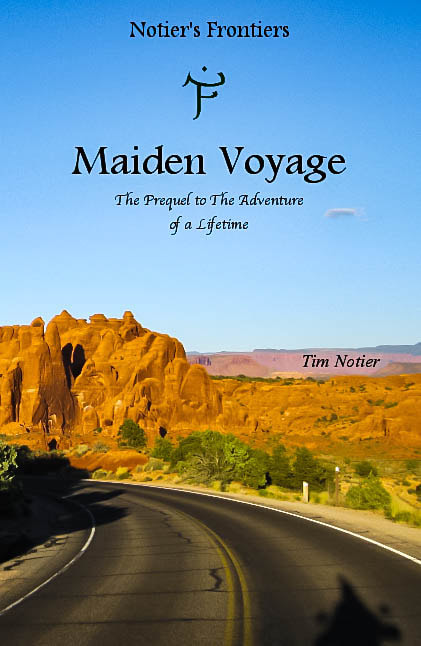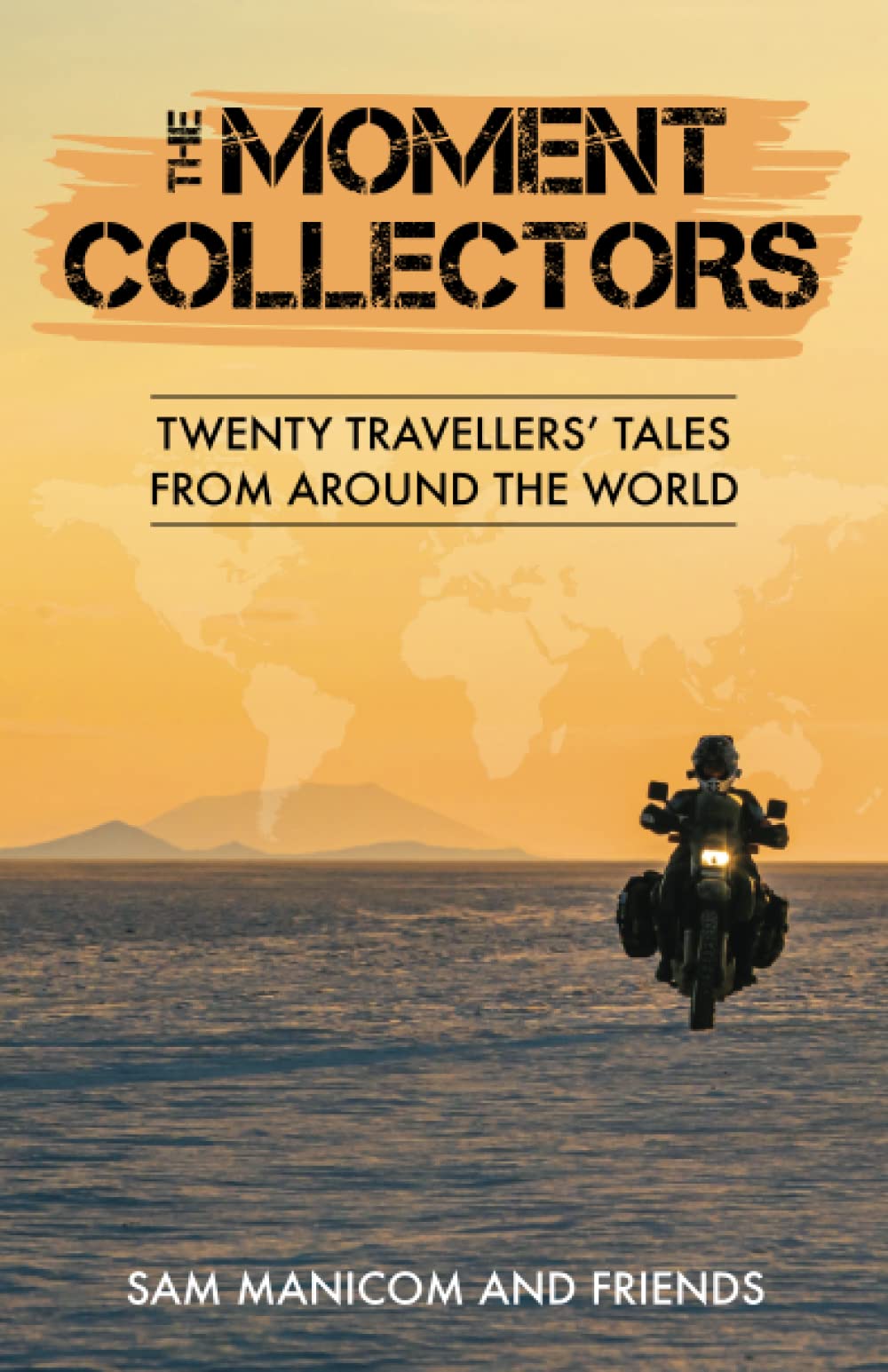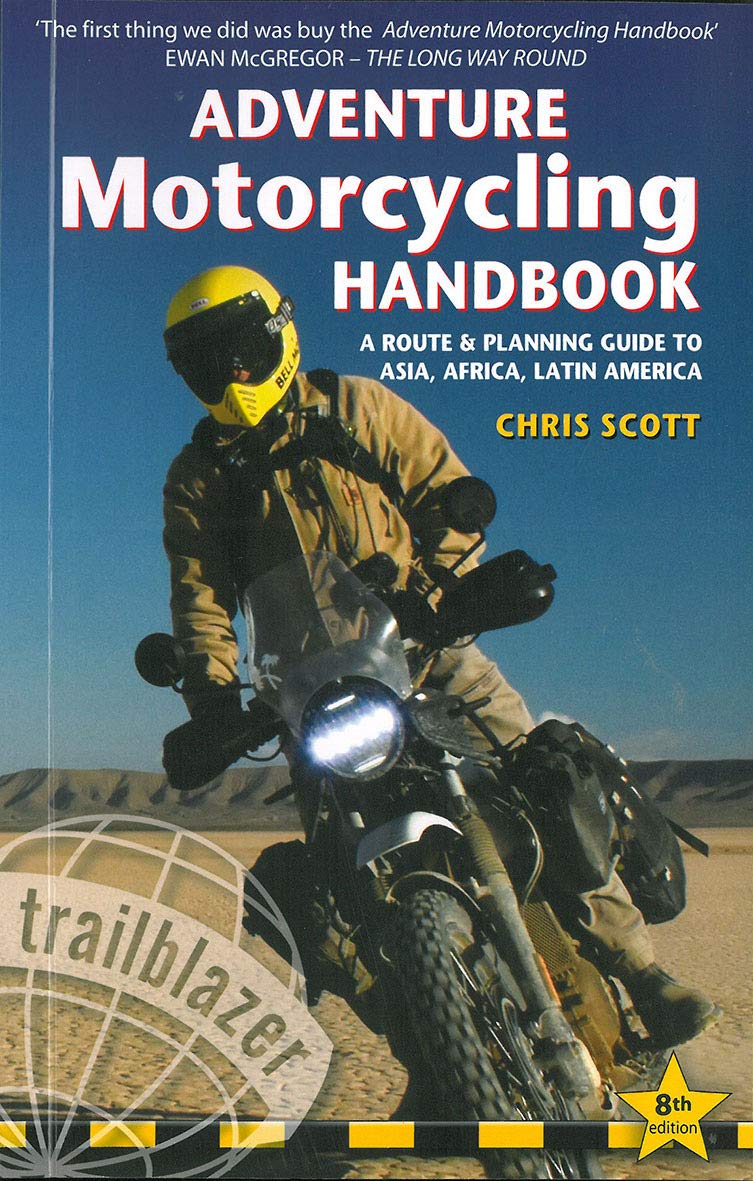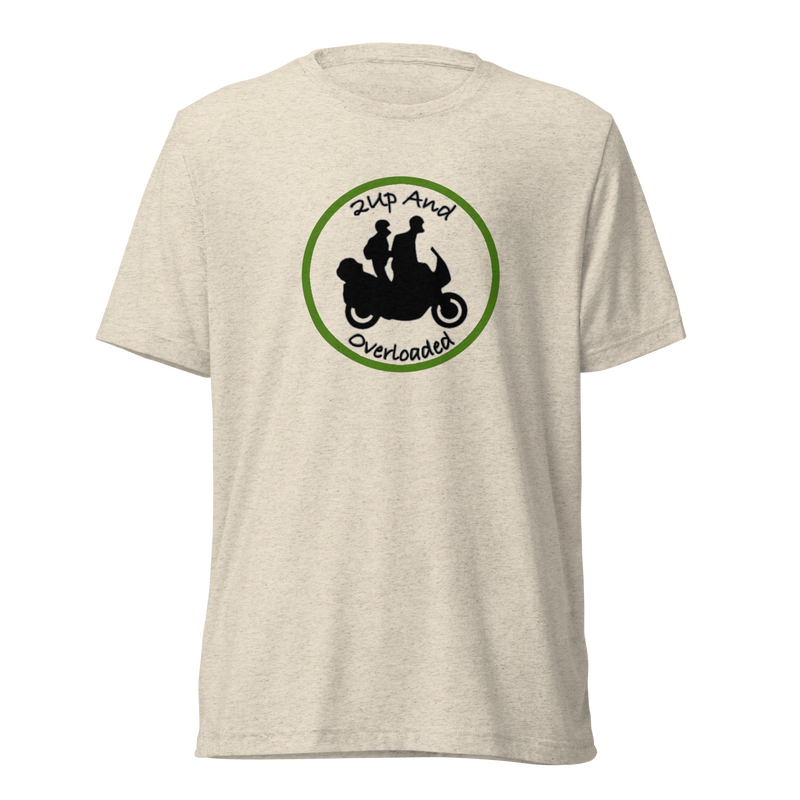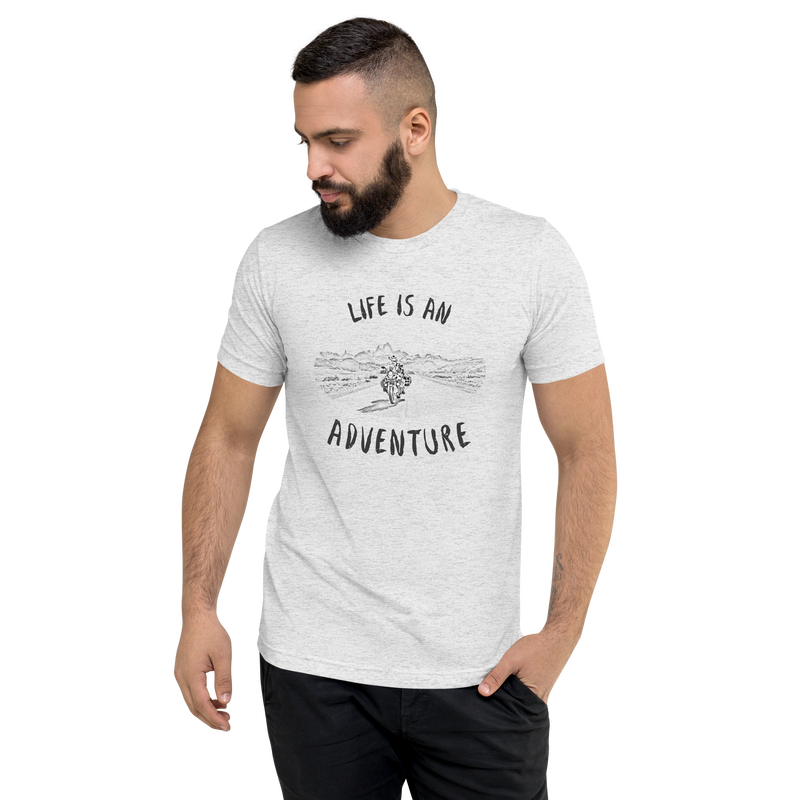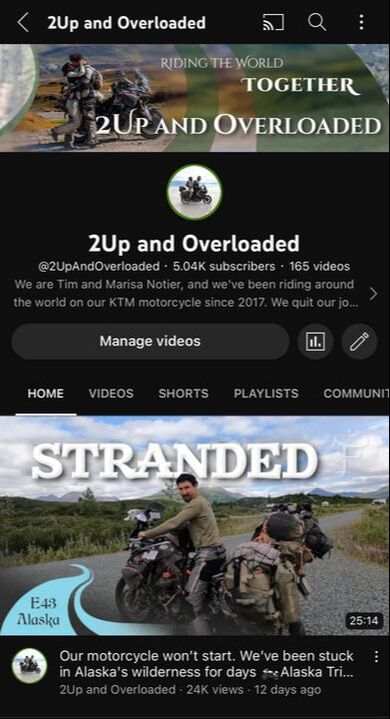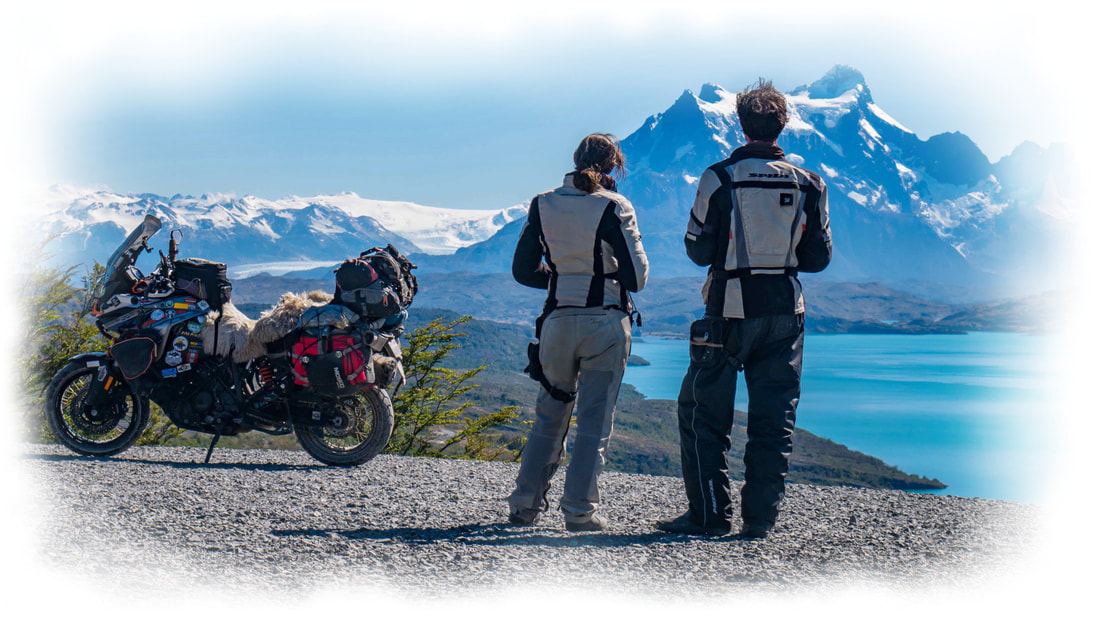By MarisaWhen we arrived at the airport in Cape Town, we were greeted with a huge sign on the wall that said, “Welcome to the Mother City." And as I stood there listening to the cacophony of strange languages being spoken around me, I immediately got the feeling that I had come to a special place, not just Cape Town, but Africa as a whole. I was reminded that it's an ancient land, the birthplace of humanity, mother to us all. Though I'd never been here before, I felt that in a strange way I was coming back to something, even it was just a deeper look within myself. It could have just been the jet-lag, but I stood there like a child, gaping around me wide-eyed and curious. And I got the feeling that South Africa had a lot to teach me. It's been only a couple weeks, but so far, Tim and I have learned quite a bit. And the following are just a few of our first lessons that South Africa has taught us. Lesson 1 - Things are Upside-Down and BackwardsFrom the airport, we hopped into a cab and immediately laughed when we saw the steering wheel on the wrong side of the car (alright, it's technically on the right side... but not the correct side). Of course I'd known that it was going to be like this in South Africa, but it's one thing to read about it, and another thing to sit in the taxi and watch the driver shift with his left hand. Tim gave me a look of, “Uh oh," showing me that he was also concerned about driving around on the motorcycle in this backwards world. It took about a week (and a whole lot of expensive payments) to get our motorcycle successfully flown from Canada to South Africa, including a transfer in London. But at last we uncrated her in a warehouse in Cape Town, and there she was, sheepskin seat cover and all: our good old bike that had taken us through hell and back again, and was about to do it all again. But when we hopped on and pulled out onto the street for the first time in South Africa, we suddenly felt completely disoriented as we had to now drive on the left-hand side of the road. Right turns were the dangerous ones, now crossing two directions of traffic, highway exits were on the left, and the right lane had become the passing lane. But the worst were roundabouts, which let's face it, are always confusing, but down here they go the other way! And it's not just roads that are backwards here. This is the southern hemisphere, so now the sun is always to the north, the ocean currents spin the other way, the seasons are opposite, and the other night as we were looking at the stars, we found the constellation of Orion (you can see him from both hemispheres near the horizon), and noticed that he was upside-down on his head! But I guess if you think about it, we're really the ones standing upside-down here at the bottom of the world. Lesson 2 - Tread CarefullyIt was our first morning in South Africa, and we were at our Airbnb in Cape Town. I made some hot water, poured myself a cup of the local sweet-smelling rooibus tea, and went to go sit in the garden to soak up some sun. But when I walked into the grass, I heard crrrunch under my shoe. I took another step, and that same horrible sound of snails dying came from every move I made. Slimy squished bodies and broken shells were now stuck to the soles of my shoes, and with horror, I looked around to find that there were snails everywhere! On the walls, the chairs, the table! I thought maybe this was just an unfortunate infestation of this one particular garden, but no. Snails are all along the coastal regions of South Africa, land snails, ocean snails (periwinkles), and huge snails that people catch out of the sea and eat! Cape Town turned out to be a great introduction to ZA (that's short for Zuid-Afrika, the Afrikaans name for South Africa) in that it's a vibrant melting pot of cultures. The buildings are colorful, the flowers on the trees are all in bloom (it's spring here), and the view of the steep and majestic Table Mountain can be seen around every corner. As we walked around town, we listened to the brazen laughter of women and the clicking sounds of the Xhosa language (pronounced KO-sa, except with a popping sound for the K which I can't make). But it isn't all perfect, and we soon learned to tread carefully not just around snails. Sometimes we had to step around people sleeping on the street, or step over streams of urine running down the sidewalk. We also had to watch where we went, what parts of town we were in, and who was walking next to us, as theft is a real problem in Cape Town. It's not a blanket statement country-wide, but it's fair to say that parts of South Africa are not safe. In 2018, the country had over 20,000 murders and had the most recorded rapes per capita in the world. And I know it's one thing to see these statistics or read the news and get freaked out because you've heard only the worst-case scenarios. But it's another thing to hear from the locals on a daily basis that we shouldn't walk around at night, that we should never wild camp, that we should never leave the bike alone, and at one beach we stopped at to take pictures, a fellow beach-goer warned us that we simply shouldn't be there and it would be best if we left right away. South Africa has the highest rate of unemployment in the world. And much of that poverty, lack of skilled education, and severe unemployment is born out of a history of racial inequality. As an American, I understand what it's like to be from a country that struggles with getting past its historic times of oppression. For South Africa, those times were the Apartheid years, and their institutionalized racial segregation was much more recent than ours. From 1948 to 1991, South Africa was run by a caste system based on race which divided the country up into Whites, Indians (from India), Colored people (the term for mixed races), and Natives (blacks). During Apartheid, the land was divided up according to this racial hierarchy, which has equated to a lasting disparity of only 7% of the population owning 70% of the land. As is the case in my own country, an imbalance like this is not easily fixed, and progress towards more economic equality has been painfully slow. We got our first glimpse of the massive poverty in this country right outside of Cape Town when we passed a shanty town called Khaleyitsha, and it was appalling. I've seen people starving in India, men eating out of garbage heaps with chopsticks in China, and children standing in the freezing rain with nothing more than a shirt with holes in it in Bolivia. But I've never seen anything on this scale. Corrugated metal houses for as far as the eye could see, electric wires held up by leaning poles, lines of laundry strung up between shelters, and dirt streets full of barefoot children and rusted cars with no tires. Actually this is nothing new, but it was the scale and permanence of it all that blew me away. Not hundreds, but thousands of these houses surrounded us, in every direction, over every hill there was more of the same. Nearly 400,000 people live in this shanty town alone, that's a sixth of all the people who live in the entire province of Western Cape! Racial divides have been an issue in almost every nation in the world throughout history, and healing those wounds correctly is never an easy task to accomplish. So yes, everyone in South Africa may have gained their freedom 25 years ago, but that has not necessarily equated to economic prosperity. With a democratically-elected government accused of mass corruption and financial mismanagement, people are frustrated, and those who have nothing often take it out on those who have it all. So no wild camping for us. No leaving our bike outside of pharmacies and grocery stores as we just pop in for a moment. But at the same time, we're determined to explore this incredible country, even if it must be done cautiously. Lesson 3 - Keep Your Eyes Open for WildlifeTo me, the word Africa is synonymous with wild, and our first venture into the wild happened within South Africa's largest city, Cape Town. We had only been in the country a couple of days when we decided to go up Cape Town's most iconic spectacle, Table Mountain. So we jumped in a cable car which took us to the top, and soaked in the coastal views as we hiked around the mountain. The top of Table Mountain felt like another world from the bustle of the city down below: it's cool up there, foggy, and covered in windswept grassy knolls and swampy bogs chirping in frogs. As we walked around, Tim suddenly pointed to three tiny antelope hopping amongst the bushes. They're called klipspringers, and they stood majestically on boulders, giving us long stares with their dark eyes, not like they were scared of us, but almost like they were just as curious in us and we were in them. It was our first African wildlife spotting and we hadn't even left Cape Town! But that was just the beginning. Once we got our bike, we headed out around the Cape of Good Hope and along the southern coast where we saw African Penguins near Betty's Bay, land tortoises slowly crossing the road, mongooses running around the bushes, and rodent-looking mammals called rock hyraxes (locally known as Dassies). Strangely enough, these little guys happen to be the elephant's closest relative. But then we noticed signs on the road that said, “WARNING! Baboons are dangerous animals. Keep your windows up and doors locked." Doors locked? So baboons have figured out how to get in your car?! That didn't bode well for us on a motorcycle. Sure enough, we did see baboons along the roads, lots of them. Baboons are ground-dwelling monkeys with short tails that live only in Africa and the Middle East. These ones we've seen have been Olive Baboons, known for their dog-like muzzles and long fangs. A bite from one of these is very bad news. People warned us of their aggressive tendencies, and once I googled Olive Baboons, I discovered that their real name is Papio anubis, named after Anubis, the Ancient Egyptian god of death and the underworld. Great. Yeah, we decided to keep our distance from these guys, which is actually quite hard since they're on every backroad and even some major highways. I guess once you're in South Africa, you can't avoid the wildlife even if you wanted to. Lesson 4 - Don't Trust Your Eyes, Trust Your NoseOut of the cities, South Africa's natural majesty really comes to life, and the amazing smells begin. Driving through the hills and mountains along South Africa's southern coast has offered us some stunning views, and we very easily forgot where we were. Around the Cape of Good Hope and toward Cape L'Agulhas (the most southern tip of Africa), sometimes the mist hung over the cliffs and the cold ocean pounded the seashore rocks like we were somewhere off the coast of Ireland. I could smell the salty sea foam in the air, but after suddenly getting a whiff of wet fish, I recognized a new odor: the smell of penguins. And my vision of Ireland quickly faded as I watched a little black and white penguin waddle by. On another occasion, we were on the winding dirt road of Swartberg Pass. The cliffs were beige and red with little patches of green thorny shrubbery along the streams and wetter valleys. With long and dusty views, I pictured myself in Utah, or New Mexico, but then our local friend handed us a dried sausage of Oryx meat (called Dröewors, DROO-eh-vorsh), and I let the smell of its wild-gamey saltiness soak into my nostrils, reminding me that this is definitely not like home. This is Africa. Montagu Pass was another disorienting journey through an area that seemed to me like the Andes Mountains of Peru. It was a cold and rainy day (45˚F, 7˚C), and I could feel the wet chill in my bones as we slid our way along the gravel and mud of the Witfontein Mountains. Surrounding us were deciduous tress still in their leaf-less winter state, mossy and wet, and the ground was covered in emerald green ferns heavy with the spring rains. This couldn't have been the Africa that I had always pictured, no way. All my senses were telling me that this had to be somewhere else, Peru, or Canada maybe? And then there were the Cango Caves, a popular site near Oudtshoorn where people come from around the world to explore its underground mysteries. Inside it smelled dank and humid, like many people's breaths being trapped within wet stone. We went on the Adventure Tour, full of spelunking through tiny holes and crevices, one of which, called the Chimney, gave me a moment of panic as I thought I'd never get out again. I'm not sure they'd let any old person do this in the States without first taking their measurements because one guy in our group didn't make it through the last part (they were able to get him out by making him retrace his steps through the cave system). But the strangest sensation was when we were off-roading through Baviaanskloof Nature Reserve (meaning “baboon ravine" in Afrikaans), and the cliffside scenery was rugged and wild, with names for the rock formations like Seven Dwarves (Sewe Dwarge) or Window Rock (Vensterklip). We could have been in the southern Rockies, or Nevada somewhere, but it wasn't until we camped that night at a “bush camp" that we got the feeling that we weren't in Kansas anywhere. After waking up to the sunrise sounds of many strange bird calls, some quacking like squeaky dog toys, some simply loud and repetitive, Tim got out of the tent and said, “Hey, you better come out and see this. There are monkeys everywhere!" I had just been thinking that it smelled like a zoo. And sure enough there were monkeys in all the trees, mothers with babies, older males watching us with human-like eyes. They were Vervet Monkeys, all white except for their black faces. Unfortunately, we couldn't get any pictures of them, but it was a moment, and a smell, I won't soon forget. Once we got out of the crazy off-road wilderness of the Baviaans (it was tough and Tim did not drop the bike, might I add!), we passed through farmlands towards Jeffrey's Bay, where we are now. And as we rode along Tim said to me through our helmet intercoms, “Do you smell that? It smells like our soap." “Yes!" I said just as the smell hit me, just like the soap we kept in the bottom of our pannier. But was it melting from the heat of the bike? Or had somebody been wearing some intense perfume as we rode by? And then I realized it: orange blossoms! We were passing orange tree orchards and the tiny white blossoms made the whole region smell like a soapy perfume. Tim and I sucked in the rich fragrance until all of a sudden we must have passed a cattle farm and both simultaneously went, “Ughhh!" at the putrid stench of manure. Not all the smells of South Africa are inviting. Lesson 5 - Learn to BraaiSouth Africa has welcomed us with open arms in a way that exceeded even our highest expectations. Everywhere we've gone, we've met fellow motorcycle enthusiasts (many of whom have KTM's like ours), and they've invited us into their homes, onto their trails, and perhaps best of all, into their kitchens! South Africa's unique cultural mixing has led to some pretty amazing cuisine, from spicy curries, to Malaysian sweets, and even German breads. Add that to the mix of interesting animal products, such as ostrich egg omelets and kudu meat burgers (large antelope with twisted horns), and you've got yourself something very unique. But most everything in South Africa revolves around braai, (said like try, but brai) which is the Afrikaans term for barbecuing over wood or coals (and who doesn't love that?). Last Tuesday was National Heritage Day in South Africa, but everyone told us they generally called it National Braai Day. Braai centers around barbecuing meat, such as boerewors (pronounced BOO-reh-vorsh, meaning farmer's sausage) which is a spiraled sausage of mostly beef and clove-like spices. But braaing can be done with any meat, and lamb chops is a regional favorite. And vegetarians don't despair, because South Africans braai other things like bread rolls baked slowly over the coals called Roosterbrood (RUHster brood). And Braaibroodjie (brai broo-EE-kee) is a grilled cheese sandwich with tomato and onion... mmm. South African cuisine also includes other veg-friendly foods like pap, which is a traditional Bantu porridge made of corn, or my personal favorite word, chakalaka, which is a spicy side relish of beans or other veggies. Basically, South African food has simply blown my tastebuds away, and I've been loving every bite of it. And I haven't even mentioned South African wine yet... Where We WentI can't believe we are still only in the very beginning of our African journey, because we've learned and seen so much, and still have so much more ahead of us to explore. Next up we're heading along the Wild Coast toward the mysterious mountains of a little country known as the Kingdom in the Sky: Lesotho (I won't blame you if you haven't heard of it). So stay tuned! This week we'd like to thank Jaques and Almarine for introducing us to braai and taking us on memorable rides, to Peet and Marenda for your generosity and route knowledge, Stephanie and Cornell for showing us the wonders of the coast, and for so many others who have welcomed us to their homes and helped us find these incredible roads. And thank you to all of our readers! Keep following us, and we'll keep up with the adventures! |
Follow UsRide with us from Chicago to Panama!
2Up and Overloaded Get inspired by the tale that started it all:
Maiden Voyage 20 author's tales of exploring the world!
The Moment Collectors Help us get 40 miles further down the road with a gallon of gas!
Become a Patron for early access to our YouTube Videos!
Subscribe to our YouTube Channel!
Subscribe to our Blog by Email
|
2Up and Overloaded
Join our clan of like-minded adventurers...
Proudly powered by Weebly
Designed by Marisa Notier

